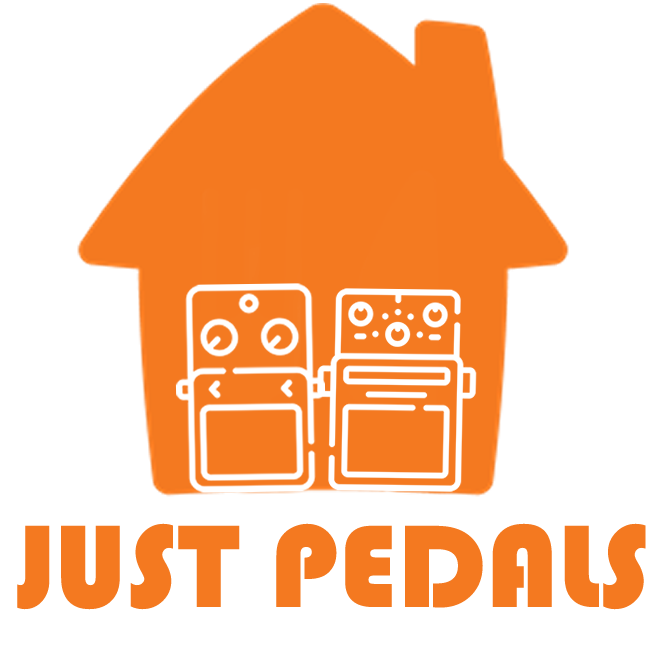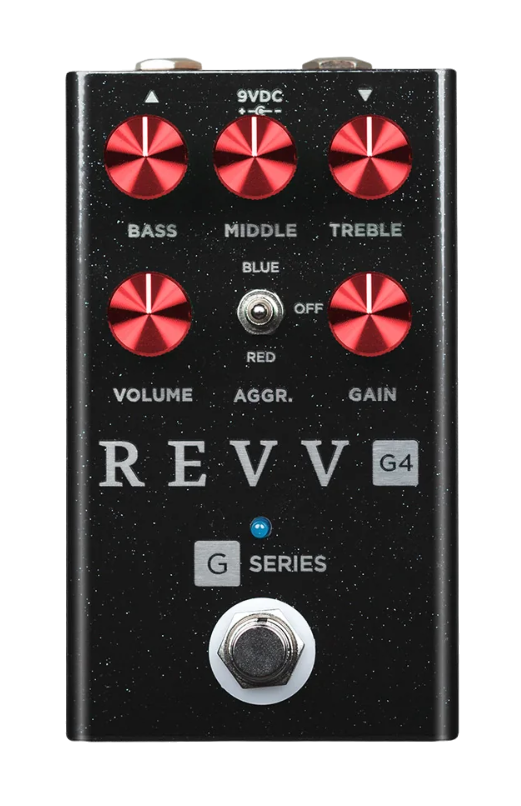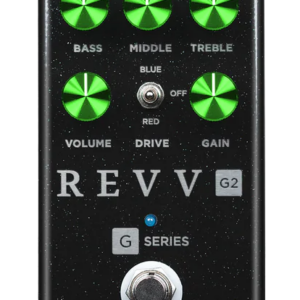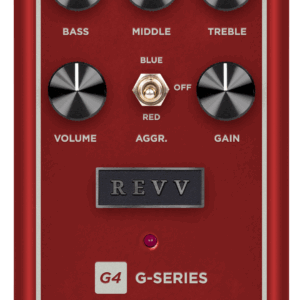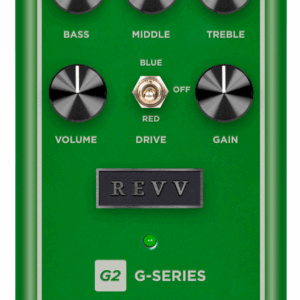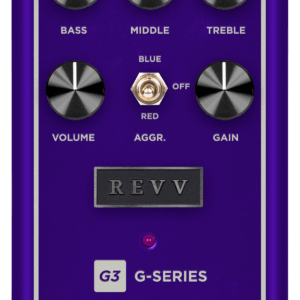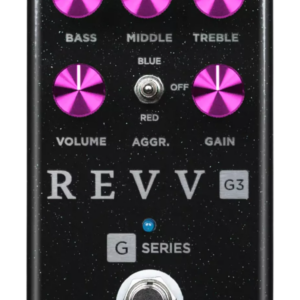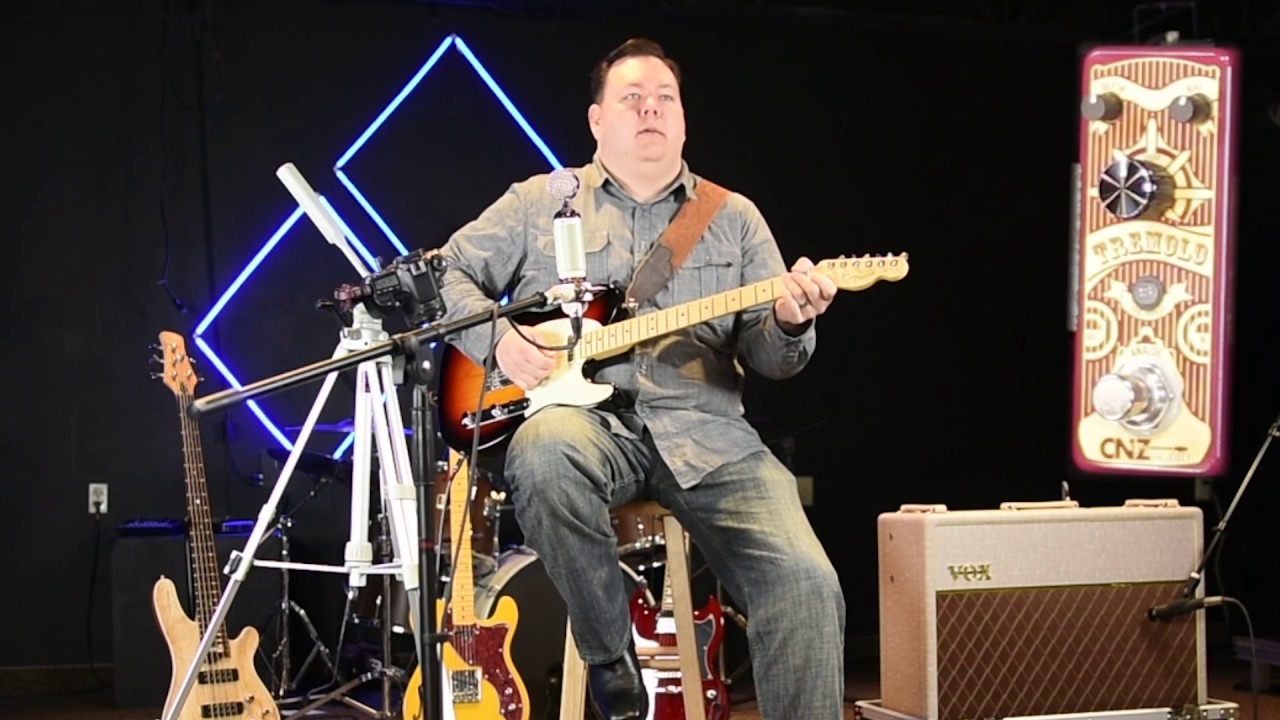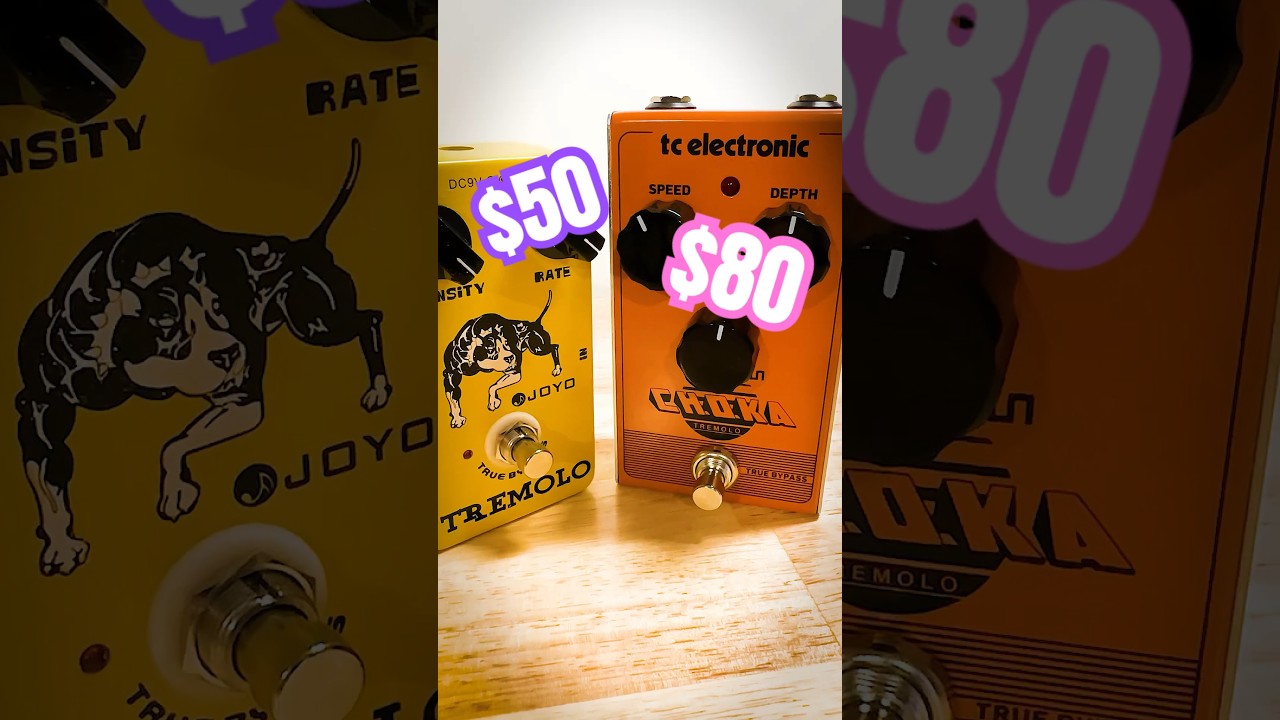Description
The Revv Amplification G4 Preamp Overdrive & Distortion Pedal in Black is currently retailing at £219 and it is in stock. Available to be delivered to you by post direct (some charge may apply).The team at Just Pedals think that Revv Amplification nailed it with the Revv Amplification G4 Preamp Overdrive & Distortion Pedal in Black. Revv Amplification G4 Preamp Overdrive & Distortion Pedal in Black
We have new and used Revv Amplification musical equipment available on our website for fast direct delivery from sellers across the UK & Europe.
Revv Amplification is a Canadian company that designs and manufactures high-performance guitar amplifiers and pedals known for their modern, versatile tones. Founded in 2011, Revv has gained a strong reputation in the music industry for creating amplifiers that deliver a range of sounds, from clean and crisp to high-gain distortion, with a focus on clarity, precision, and responsiveness. Their flagship models, such as the Generator series, are popular among musicians for their ability to produce **dynamic, professional-grade sound** in both live performances and studio settings. Revv also offers a range of **innovative pedals**, such as the **G3** and **Shred**, which provide enhanced tonal shaping and distortion, often favoured by players looking for **high-quality, modern tones** across various genres, including rock, metal, and blues.
Amplification refers to the process of increasing the strength of an audio signal, typically to drive speakers and produce sound at a higher volume. In the context of guitar and bass, amplification involves boosting the signal from the instrument to a level that can be heard clearly, often with the added benefit of shaping the tone through various preamp, power amp, and speaker cabinet combinations.
Amplifier pedals and amp simulators are commonly used to replicate or enhance the sound of traditional amplifiers in a more portable or controlled format. Well-known examples include the SansAmp by Tech 21 and the Eleven Rack by Avid. Amplification is central
Distortion is a type of guitar effect that alters the sound by adding sustain, harmonic richness, and a gritty or aggressive character. It clips the audio signal, creating a more saturated and powerful tone. Distortion is commonly used in rock, metal, and punk music, offering everything from warm, crunchy overdrive to heavily saturated, high-gain chaos. Unlike overdrive, which mimics the natural breakup of a tube amp, distortion produces a more intense, compressed, and processed sound. Popular distortion pedals include the Boss DS-1, ProCo Rat, and MXR Distortion+.
Just Pedals is a new Guitar Effect Pedals Marketplace – We feature new and used Guitar Effect pedals from different sellers, to purchase online from the UK.
Overdrive is a popular guitar effect that creates a warm, distorted sound by amplifying the signal of an electric guitar, typically using a pedal or an amp’s built-in circuit. The effect simulates the natural distortion that occurs when a tube amplifier is pushed to its limit, creating a rich, harmonic response that adds sustain, warmth, and character to the tone. Overdrive pedals are commonly used to add grit and growl to a clean tone without the harshness of full distortion.
The overdrive effect works by boosting the input signal, causing the amplifier to break up and clip the waveform, resulting in a smooth, musical distortion. This is often more subtle and less aggressive than other forms of distortion, making overdrive pedals ideal for blues, classic rock, and country players who seek a dynamic sound that responds to their playing touch. Overdrive pedals can be used in conjunction with other effects like delay and reverb to shape a more complex, evolving sound. Popular overdrive pedals include the Ibanez Tube Screamer, the Fulltone OCD, and the Boss OD-3, each offering different tonal characteristics, from smooth and bluesy to punchy and aggressive.
A preamp pedal boosts the guitar signal to line level before it reaches an amplifier, shaping the tone and adding warmth, character, or gain. Preamp pedals can be used to simulate the sound of an amplifier’s preamp stage, providing overdrive, distortion, or clean tone shaping. They can also be used to drive amplifiers harder or to add tonal colour and EQ adjustments. Some preamp pedals are designed to mimic classic amp sounds, such as those from Fender, Marshall, or Vox, while others offer more modern, transparent tones. Well-known preamp pedals include the Tech 21 SansAmp, Electro-Harmonix Soul Food, and MXR M81 Bass Preamp, making them a useful tool for tone shaping in both live performances and studio work.
Just the latest videos
Just related products
£22.99
Get tube-like distortion, smooth sustain and super-fat tone Unique balance control to blend between overdriven and dry bass sound for maximum punch Dedicated level, 2-band eq and gain controls for awesome sound shaping Blue status led for effect on/o…
read more
£34.99
SLIMLINE PRACTICE AMP – 10W slimline practice amp for use with electric guitars (we cannot confirm compatibility with any other electronic devices) with volume, tone, gain and overdrive as well as a headphone socket TONE CONTROL – Decide how you soun…
read more
£89.00
Based on original DOD 250 circuit design with updated components and functionality True Bypass and new crisp blue LED status indicator Lighter aluminum chassis Modern 9V DC power supply input New yellow metallic flake paint with flat black bottom
£99.00 £98.99
3 Modes – DIST 1, DIST 2 & OVERDRIVE Transparent fully buffered operation at all times Silent switching Excellent consistent load for passive Volume pedals Solid metal chassis construction Handcrafted in the U.K. Gain, Volume, Range, and Colour contr…
read more
£30.99
JOYO American Sound guitar effect pedal reproduces the sound of Fd 57 Deluxe amp, performs great sound from clean to driven and everywhere in between which can simulate lots of amplifiers. Level and Drive controls add incredible range, with it's full…
read more
